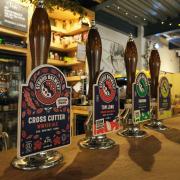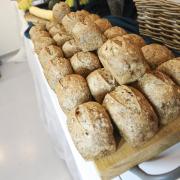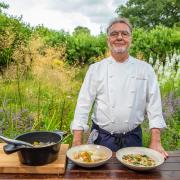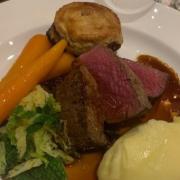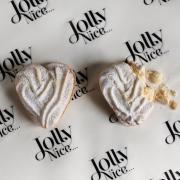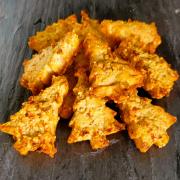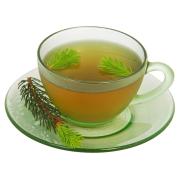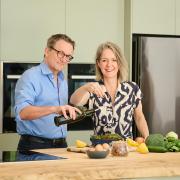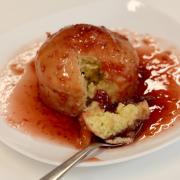There are just a few traders left who will display a whole pig’s head in their window and even the sawdust covered floor is a distant memory
If you want a wonderful festive read this Christmas dig out a copy of The Season of the Year by the Tewkesbury author John Moore. When he reaches December, Moore describes an irascible pub regular called Jeremy Skinner.
Every Christmas Eve, grumpy old Jeremy pulls from his pocket a yellowing photograph of a butcher’s shop with the hand-written inscription ‘Christmas 1913’. Insisting that everyone in the bar takes a look at the ancient snap, he points at the enormous sides of meat hanging in front of the shop window and “the rosettes… they were worn by the prize-winning beasts at the Christmas fat stock fair. He never bought anything but the best, he didn’t. His sirloins would melt in your mouth.”
That scene is an image of bygone days in market towns all over the Cotswolds. But it also points out the direct link that used to exist between farmers and the food we enjoyed on our festive dinner tables every year. Of course it could never happen today. We live in a different world; pollutants in the air, hygiene rules, modern attitudes and commercial sensitivity all mean that the most outlandish of those Christmas displays in butcher’s shops of yesteryear just wouldn’t be allowed.
The annual fat stock fairs were the place where shop-owners vied with each other to buy the superstar livestock of that year’s county show. It was a matter of professional pride to offer joints from the biggest, beefiest animals to their customers in the run up to Christmas. Today there are far fewer cattle markets in the shire counties but the new, regional auction centres keep that festive tradition alive.
The Cirencester livestock market has a Christmas primestock show and sale of cattle, rearing calves, sheep, pigs and poultry in early December. The three-day event also includes a Young Farmers’ stock judging contest, classes for cookery and produce as well as a series of art competitions for local schoolchildren; one of which, I’m delighted to say, is sponsored by the Cotswold Farm Park this year.
Meanwhile, a close look around the area can reveal all sorts of other connections to the meat trade. For instance there’s the Butchers Arms in Sheepscombe near Painswick. The pub’s name dates back to the time when the valley was part of one of Henry VIII’s deer parks. In those days it was normal for deer carcasses to be hung in what is now the bar and even the pub sign is one of the best-known in Britain. It includes a carving of a butcher holding a tankard of foaming ale with a pig tied to his leg.
I have a particular interest in in the whole subject because the meat business goes back a long way in the Henson family. Although our surname is more associated with farming and showbiz these days, I’m very proud of the fact that my Victorian forebears were renowned for top quality tripe and offal in Smithfield Market. 120 years later, Henson Foods Ltd is still at the centre of London’s meat industry from a new base in King’s Cross and the company is well-known for its salt beef which is sold in top restaurants and delis all over the country.
Those modern establishments are a long way from the old-fashioned butcher hanging huge sides of meat as well as fowl, game and rabbit outside his shop, from pavement to ceiling. There are just a few traders left who will display a whole pig’s head in their window and even the sawdust covered floor is a distant memory. Now farmers and butchers have to come up with more imaginative, up-to-date ways to demonstrate how our food goes ‘from field to fork’. Even if old Jeremy Skinner would never have entertained such a phrase!
This article was taken from our December 2015 issue.
Follow Adam on Twitter: @AdamHenson








